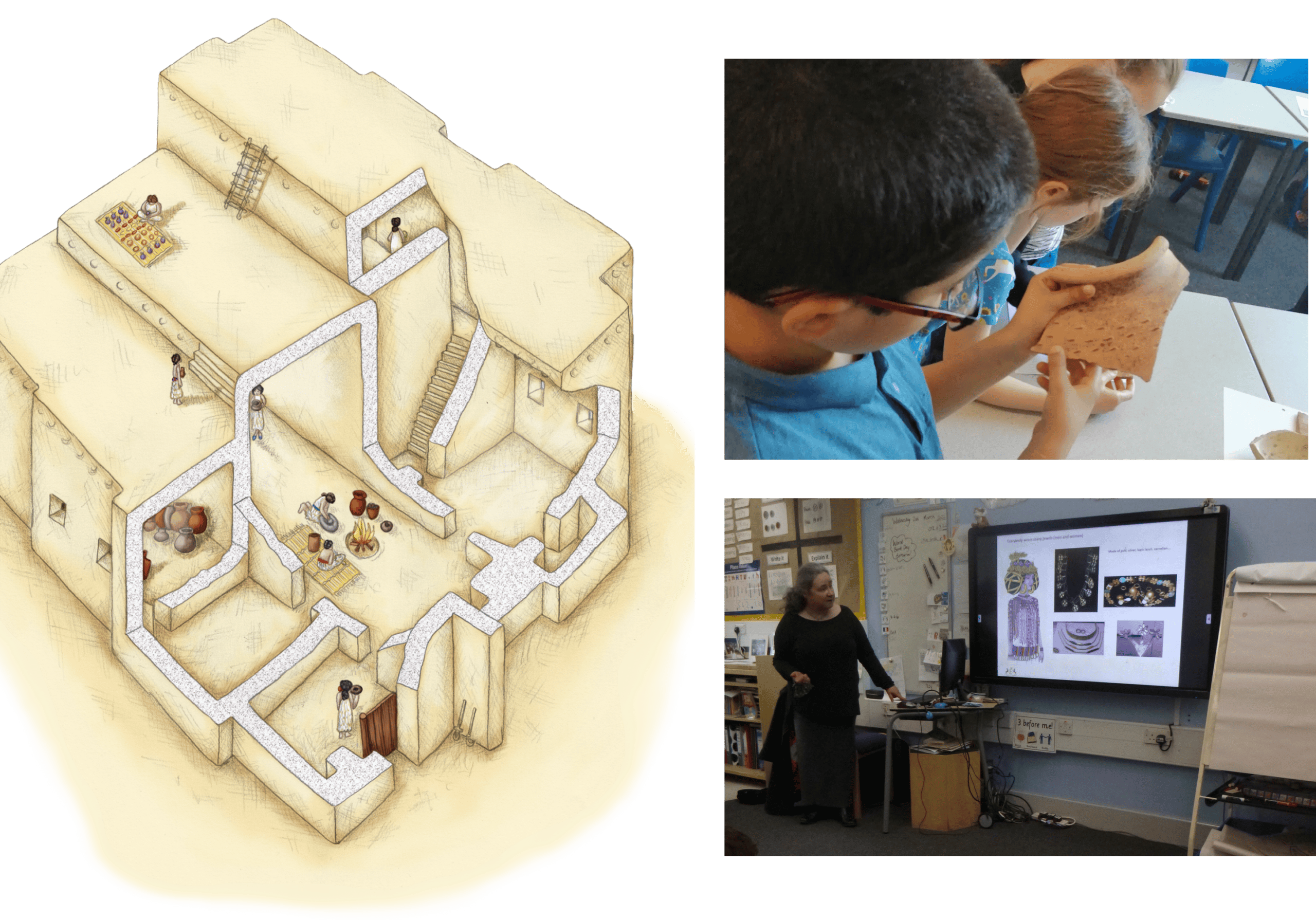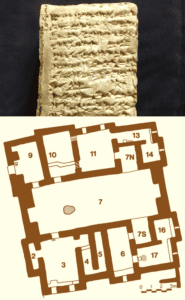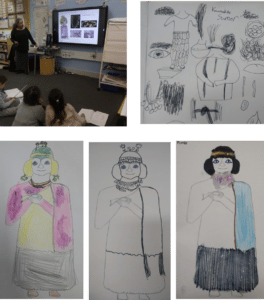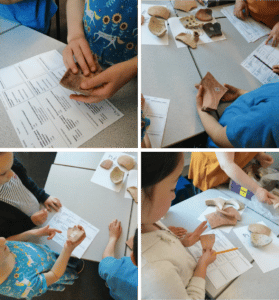
All you ever wanted to know about the Sumerians! What do they eat? How are the houses like? What about Sumerian fashion? Do they have festivals? How do they bury their dead? Do they have pets?
The first part of the session is flexible and focuses on children’s main interests. The second part (and activity) explains briefly to the children the job of the archaeologists and we reconstruct the past.
✓ 40 to 50 minutes sessions
✓ All KS2 levels: Year 3 to 6 (material is adapted to different year-levels);
✓ Price: Short workshops: £50 in-person; £25 online; Long workshops: £75 in-person; £50 online
✓ Included: documents for each child (2-3 pages Pdf to print out)
✓ Atelier disponible en français:
idéal pour le niveau 6e
This session focuses a lot on the interpretation of ancient sources, both archaeological and textual and the way they complement themselves to reconstruct Sumerians’ daily life.
The session briefly explains how archaeologists work with the great diversity of information they collect (architectural elements, pottery sherds, plant remains and bones, treasures… and texts). It also presents how to read and use texts: what is said behind the lines? It shows how to cross-reference information in an archive or how to reconstitute the menu of a royal feasting from administrative texts.

Activities: discover Sumerian fashion or be an archaeologist for one day!
Sumerian fashion!

Special hairdo, jewels and kaunakes (woollen skirt). Children dress their own "statue"
Like an archaeologist!
Children learn how to interpret information from authentic pottery sherds (III BC) - only available in-person (get in touch for an alternate session online.
It is recommended to book a long session for the sherds.

